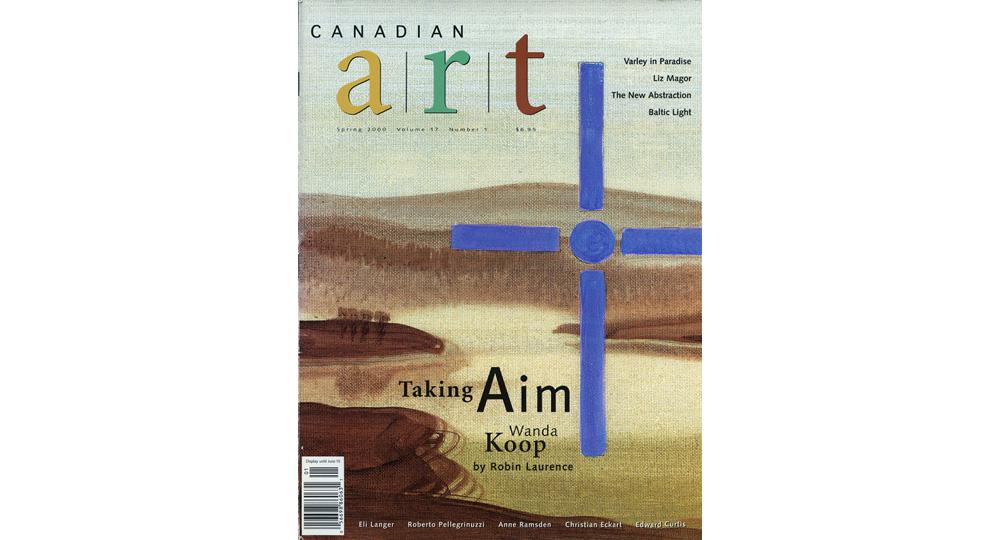At sunset on a summer night last year, hundreds of people arrived, invitations in hand, at a neoclassical building on Winnipeg’s Main Street. They walked through a revolving door, past two cops, a cameraman and a marble wall engraved with the names of soldiers killed during the First World War, and into a vast banking hall. There, they were struck into hushed stillness by an immensity of aural and visual sensation. Five three-by-four meter paintings, ranging through degrees of abstraction and representation, were mounted high on a U-shaped configuration of black marble countertops. Dramatically lit, they glowed silver, bronze, and acid yellow in the dusky darkness. High above them, four immense video projections shifted like celestial presences—newly discovered constellations of human figures standing, walking, biking, rowing—across the Great Hall’s upper corners. In adjacent rooms, two related but smaller installations were staged: a video loop of an albino gorilla in a zoo was projected in concert with some fifty letter-sized paintings, and another painting, domestic in scale, was mounted above a fireplace in a room covered with tapestry wallpaper. Behind the stunning visuals, a soundtrack of soughing and tapping sounds evoked the wind through long grass and a heartbeat inside a stone chamber.
So begins our Spring 2000 cover story. To keep reading, view a PDF of the entire article.

